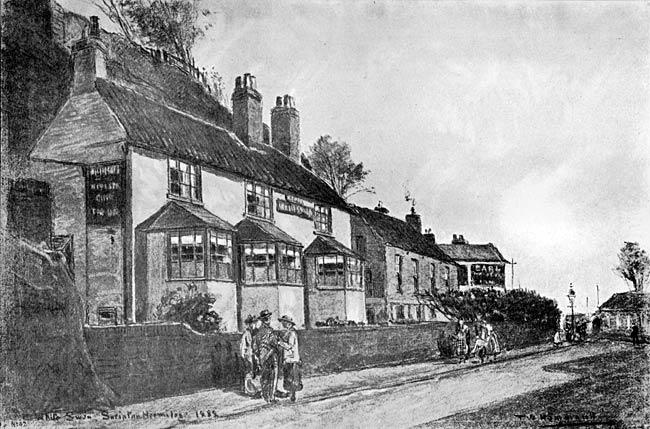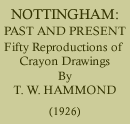< Previous | Contents | Next >
NOTTINGHAM PAST & PRESENT: OLD INNS
THE WHITE SWAN INN, Sneinton Hermitage, 1888

Nottingham occurs in history, soon after the withdrawal of the Roman government, under the strange name of 'Tigguocobauc'—which is said to mean 'Cave Dwellings'. The site was occupied by a British Tribe called the 'Coritanii' who had a settlement in the district where St. Mary's Church now stands and who there excavated habitations in the soft sandstone.
Nottingham is still full of caves, the cellarage of the lower portion of the town being hewn out of the solid rock. During the middle ages these cellars had an interesting influence on the trade of the town for it was found that excellent ale could be matured in their equable temperature; so Nottingham became famous for its 'Nut Brown Ale'; and it was only when the discovery was made that the water of Burton-on-Trent was better for brewing that Nottingham lost its priority in this respect.
Many of these excavations were used as dwelling places down to modern times; among the last so used was a row of thirty-one houses the rear chambers of which were hewn in the rock; they were known as 'Sneinton Hermitage'. They are recalled by Mr. Hammond's drawing, and very charming appear the old houses with their quaint bow windows set as a 'trap to catch a sunbeam'. They were pulled down to erect the great stone wall that rivets the London and North Western goods yard in Southwell Road.
